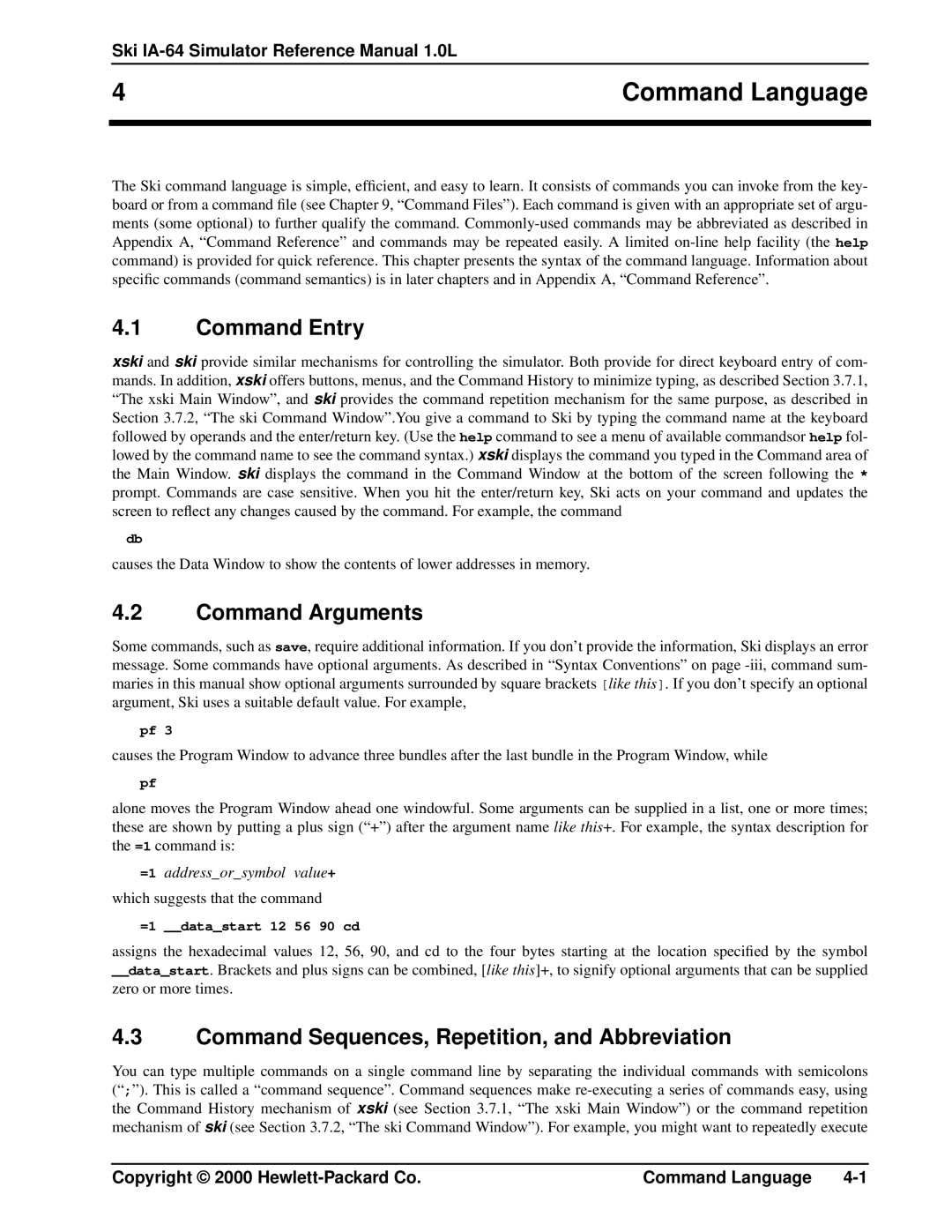
Ski IA-64 Simulator Reference Manual 1.0L
4 | Command Language |
|
|
|
|
The Ski command language is simple, efficient, and easy to learn. It consists of commands you can invoke from the key- board or from a command file (see Chapter 9, “Command Files”). Each command is given with an appropriate set of argu- ments (some optional) to further qualify the command.
4.1Command Entry
xski and ski provide similar mechanisms for controlling the simulator. Both provide for direct keyboard entry of com- mands. In addition, xski offers buttons, menus, and the Command History to minimize typing, as described Section 3.7.1, “The xski Main Window”, and ski provides the command repetition mechanism for the same purpose, as described in Section 3.7.2, “The ski Command Window”.You give a command to Ski by typing the command name at the keyboard followed by operands and the enter/return key. (Use the help command to see a menu of available commandsor help fol- lowed by the command name to see the command syntax.) xski displays the command you typed in the Command area of the Main Window. ski displays the command in the Command Window at the bottom of the screen following the * prompt. Commands are case sensitive. When you hit the enter/return key, Ski acts on your command and updates the screen to reflect any changes caused by the command. For example, the command
db
causes the Data Window to show the contents of lower addresses in memory.
4.2Command Arguments
Some commands, such as save, require additional information. If you don’t provide the information, Ski displays an error message. Some commands have optional arguments. As described in “Syntax Conventions” on page
pf 3
causes the Program Window to advance three bundles after the last bundle in the Program Window, while
pf
alone moves the Program Window ahead one windowful. Some arguments can be supplied in a list, one or more times; these are shown by putting a plus sign (“+”) after the argument name like this+. For example, the syntax description for the =1 command is:
=1 address_or_symbol value+
which suggests that the command
=1 __data_start 12 56 90 cd
assigns the hexadecimal values 12, 56, 90, and cd to the four bytes starting at the location specified by the symbol __data_start. Brackets and plus signs can be combined, [like this]+, to signify optional arguments that can be supplied zero or more times.
4.3Command Sequences, Repetition, and Abbreviation
You can type multiple commands on a single command line by separating the individual commands with semicolons (“ ;”). This is called a “command sequence”. Command sequences make
Copyright © 2000 | Command Language |
